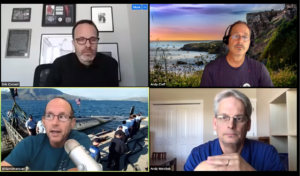Sometime during my 50th trip around our star, I had a thought: I should run a marathon before I turn 60.
And then those voices in my head kicked in with a nice chorus of “Yes, but…”
- “You can’t even run a mile without wheezing!”
- “Remember in high school — when you played soccer and lacrosse and you chose the position that required the least amount of running: goaltender?”
- “You’re over the hill. Take up bocce ball instead…”
So I went back and took a nap on the couch and my gremlins chalked up another victory.
Breaking Goals Down With Personal Agility
We all know, thanks to Mr. Newton, that a body at rest, absent any outside influence, stays at rest. In my case, overcoming my inertia took a little shove. The force was not an alarming annual physical, but a couple of significant life changes, one of which was the dropping of a long daily commute. All of a sudden, I had three extra hours in my day.
The universe was giving me a sign.
I decided to use my experience as an Agile coach and run an exercise (pun intended) in personal agility. Instead of taking on a full marathon, I broke it down into a smaller, less risky product increment. AKA, a shorter distance. I decided to run a 5K.
I downloaded a couch-to-5k app to my iPhone, and set out to test a hypothesis I believed to be true: I was too old and fat to be able to run for 10 mins (let alone a freakin’ marathon) without needing an EMT.
Here’s my first week of running, March 2018:
Yep: 30 mins to cover 1.75 miles and only 8 of those minutes at a running pace. My inner gremlins had a lot of fun with that.
Yet I stuck with it…
Eight weeks later, I ran a full 5k in 35 minutes. It wasn’t a record-breaker, nor a marathon, but I did disprove my hypothesis. So what was my next step, my next product increment?
Resistance to Change
Individuals, teams, and organizations all have very powerful systems that seek stasis and resist change.
In the world of coaching, we call the equilibrium the comfort zone. It’s a nice and easy place to be, nothing there worth losing sleep about and next to no anxiety. However, in the comfort zone, there is also little growth, change, innovation, or creativity. This is the land of fixed mindset.
For meaningful change, we need to move outside the comfort zone and spend some time in the stretch zone, where things can be downright uncomfortable. However, the stretch zone is also where perceptions expand and transformation and growth happens. This is the land of growth mindset. Getting there requires some incentive, or the opposite, a disturbance or a crisis. (Remember Mr. Newton?). To get through the pain, help is often needed.
The Power of Coaching
 Shortly after running the 5K, I shared my excitement with my friend Frank. Little did I know, Frank’s one of those crazy runner types. He also happened to be a very effective and subtle coach. He managed to get me out on the trail three times the following week, running at a “democratic pace” — meaning he could speak in entire paragraphs without any visible effort and I was struggling to get out one-word answers.
Shortly after running the 5K, I shared my excitement with my friend Frank. Little did I know, Frank’s one of those crazy runner types. He also happened to be a very effective and subtle coach. He managed to get me out on the trail three times the following week, running at a “democratic pace” — meaning he could speak in entire paragraphs without any visible effort and I was struggling to get out one-word answers.
At the end of that week, Frank casually dropped, “You know, you did three 5k’s this week. Do that for a couple of months and you’ll be able to run a half marathon.”
“Hmmm, Frank, check my math… that’s 21K!!” (It also happened to be halfway to my original goal.)
Frank encouraged me to sign up for the November 2018 Bucks County Half Marathon, which was about 5 months away at the time. It cost $90 to register and if I decided to bail at the last minute, the money would go to a good cause.
I made a training plan with a big visual tracking board and did my best to stick with it, even though many times, I wanted to call it quits.


But my coach kept coming up with ways to keep me moving back and forth across the border between comfort and stretch, embracing new challenges, persisting in the face of setbacks, and viewing the effort I put in as fruitful.
That fall, we both ran the Bucks Half Marathon. Frank finished at least an hour ahead of me, yet there he was at the finish line, cheering me on as I completed my race, “Dude, that was awesome. One of those a month for the next three months, and you’ll be running a full marathon… Here, have a beer!”
A Full Marathon
A few nudges here and there from Frank, and I signed up for the NJ Marathon for the following spring. I put in the miles week after week through the winter following a well-known novice training routine. My coach helped me through the new aches and pains, the selection of running gear, and changing my nutrition.
Then the day came. Sunday, April 28, 2019. It was cold. It was drizzling. I won’t sugar coat it: I was miserable from about mile 12 onwards, right after I tripped over a manhole cover and hit the ground hard. I was running at barely a walking pace, but one foot in front of the other, I made it to the finish line, 6 hours, 10 minutes, and 24 seconds later. By the time I got to the end, the free beer tent had already gone home. I vowed to never, ever do that again.
Greeting the Gremlins and the G.R.O.W.T.H. Mindset
 Then I read a blog article by Lia Ditton. She’s about to embark on a really big challenge: rowing solo and unsupported 5,500 miles across the Pacific Ocean. In her article, Lia wrote about her own gremlins. Reading that even athletes like Lia have moments of self-doubt encouraged me.
Then I read a blog article by Lia Ditton. She’s about to embark on a really big challenge: rowing solo and unsupported 5,500 miles across the Pacific Ocean. In her article, Lia wrote about her own gremlins. Reading that even athletes like Lia have moments of self-doubt encouraged me.
So I signed up for a second full marathon, the Philly AACR, and to show the gremlins who’s da boss, I gave myself another BHAG: run 1,000 miles this calendar year.
On my training runs, I listen mostly to audiobooks. Not too long ago, I finished Robert J. Anderson’s Mastering Leadership. In it, he wrote:
“As we descend into our doubts and fears, we see that they are not what we thought they were. We see that the old self is too small for the purpose and vision that want to come through. We also discover that there is a much larger self that is fully capable of creating the future to which we aspire… The pursuit of purpose brings us face-to-face with the ways we are playing-not-to-lose. [This] means facing our fears head-on, becoming a student of our fears by descending into them.”
Anderson’s idea of facing fears head on reminded me of a way I learned to chat with the gremlins at this year’s Agile Coach Camp. It goes like this:
“Hi Gremlin(s),
I see you. I hear you. I feel you. I love you unconditionally, and I accept you fully.
Now, how can I support you?”
There’s an incredible power behind this approach: turning not only to face but to embrace the “can’t do it”
voices that lurk in the shadows. Shining a light on the darkness forces those gremlins to pause, even if just for a moment. In that space, one has the opportunity to subject underlying beliefs to investigation and modification.
I was fortunate to have a running coach appear when I was ready. He assisted me with my development, my performance, and helped me to achieve outcomes I thought at the time were far beyond my capacity.
We did this through a model I refer to as “G.R.O.W.T.H.” – Max Landsberg’s GROW model (Goal, Reality, Obstacles/Options, Way Forward) plus Trust and Honesty.
You can read more here: Catalyzing Growth through Coaching

Continuing Forward
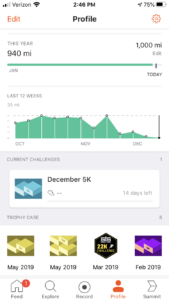
My gremlins and I have a less contentious game of hide and seek now.
Even though those pesky voices tried to “save me from myself” on race day in Philly as the weather alternated between rain, sleet, hail, and snow, I managed to complete my second full marathon.
As far as my BHAG of 1,000 miles is concerned, I’m a bit behind my target, suffering from a cranky iliotibial (IT) band. Nevertheless, I’m working every week to stay the course, one mile at a time. Part of the reason I continue is to overcome my perceived limits by leaning into them. Another reason is that I can eat all the carbs I want. Oh, and beer… It tastes so much better after a multi-hour training run.
As Abraham Maslow said: “In any given moment, we have two options: to step forward into growth or to step back into safety.”
Which will you choose?
To learn more about agility and the value of a coach, please visit our Agile coaching page.
 Agile Velocity hosted a series of online conversations exploring the most crucial leadership questions of the day.
Agile Velocity hosted a series of online conversations exploring the most crucial leadership questions of the day.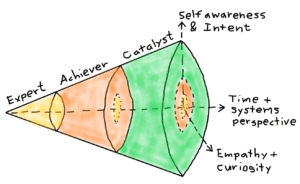
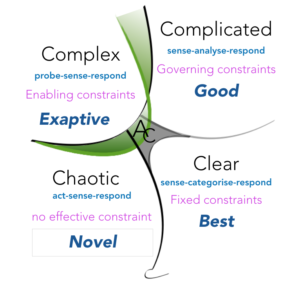
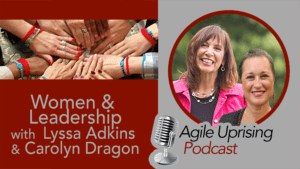 Lyssa Adkins is an internationally-acclaimed, inspiring coach and teacher. Her current focus is on improving the performance of top leadership teams through insightful facilitation and organization systems coaching.
Lyssa Adkins is an internationally-acclaimed, inspiring coach and teacher. Her current focus is on improving the performance of top leadership teams through insightful facilitation and organization systems coaching.
